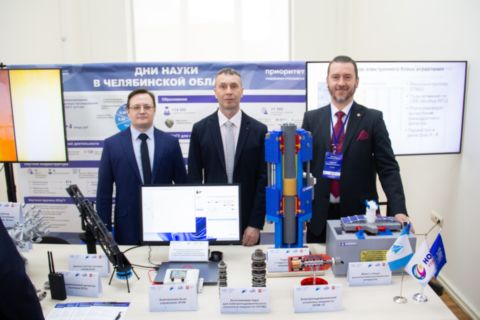The project "Development and Creation of Production of Hydraulic Tracking Drives with Hydrostatic Guides" is being developed at SUSU within the frameworks of the activities of the World-class Ural Interregional Research and Education Centre for Advanced Industrial Technologies and Materials (UIREC) and the Ural Engineering Centre (UEC) under the supervision of Professor of the Department of Automated Mechanical Engineering Technology, Doctor of Sciences (Engineering) Dmitry Ardashev.
"Let's say we have a test object that needs to be tested for vibration resistance," explains the essence of the task Dmitry Ardashev. "This could be a space satellite unit, a building structure ‑ a wall made of new bricks, large-diameter pipes, or a car. The main thing is that this object will have to experience vibrations during operation, or for example, seismic loads if we are talking about a house."
A special stand is being built for testing. This is being done by SUSU's industrial partner, the Ural Engineering Centre. Stands can be compact or huge ‑ comparable, for example, in area to the courtyard of a residential building.
For a platform with a object to start moving, hydraulic drives are needed. They quickly become unusable from repeated cyclic loads. And they must be purchased abroad ‑ in Japan, Germany, the Czech Republic, as there are no Russian analogues yet. Scientists from SUSU have taken up the development of domestic components.
"What does a hydraulic drive consist of?" explains Dmitry Ardashev. "First of all, it is a hydraulic cylinder with hydrostatic guides. The Ural Engineering Centre mastered its production as part of a joint project with SUSU back in 2021. Then came the turn of the electrohydraulic power amplifier (EHPA). It is currently under development; the project is planned to be completed in 2025. An ambitious task has been set: in terms of characteristics, it should not be inferior to Western analogues, in particular, to provide the stand with vibrations with a frequency of 300 hertz ‑ that is, 300 times per second."
In the meantime, a life-size model of EHPA, created on a 3D printer, is being displayed at exhibitions.
Finally, a sensor is needed to track the engine piston stroke, and software to process the experimental data. This part of the project is being implemented in partnership with UIREC. The software is being developed using the Linux operating system based on domestic packages. At the same time, digital twins of units (for example, a high-precision valve pair for EPHA) are being created at SUSU in order to simulate their operation on a computer first.
Over the five years of its existence, UIREC has helped many Chelyabinsk universities implement and launch their high-tech products. Created in 2019 at the suggestion of the President of Russia Vladimir Putin, it combined the efforts of major research universities in Yekaterinburg, Chelyabinsk, and Kurgan.
"When I speak at UIREC events, it usually brings benefits," says Dmitry Ardashev. "People hear about testing hydraulic drives, contacts are established, if not with us, then with our partner, the UEC. Business needs science, but they need appropriate communication to hear each other."
And Ural scientists have something to offer. For example, the resource of the hydraulic cylinder developed at SUSU is up to 100 million piston movements.
The project is being implemented within the frameworks of the Priority 2030 program under the Science and Universities national project.




